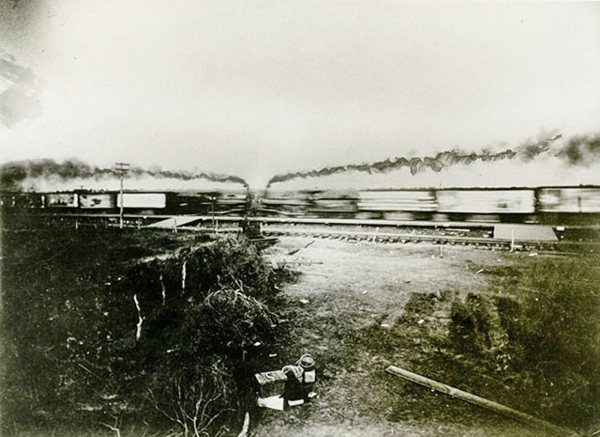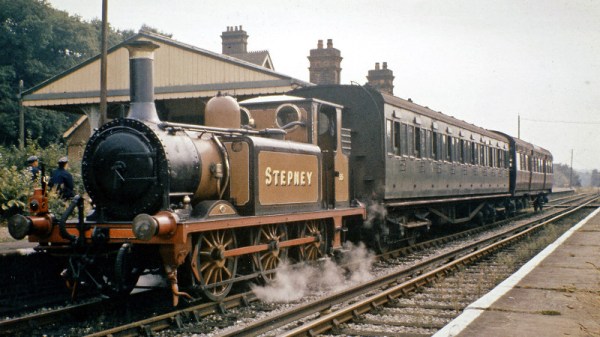Before there were demolition derbies, there were train totalings. That’s right, somebody had the idea to take a couple of worn-out train engines that were ready for the scrap heap, point them at each other, and drive them full steam ahead. And their boss said capital idea, let’s do it. This was the late 1890s.
Maybe it wasn’t the safest way to spend an evening, but a staged train wreck was surely an awesome spectacle to behold. Imagine being one of the brave engineers who had no choice but to get the train going as fast as possible and then jump out at the last second. A demolition derby seems like child’s play by comparison.
The largest and most widely-publicized wreck was put on by a man named William George Crush who was trying to find new ways to promote the Missouri-Kansas-Texas passenger railway. Once he got the okay, Crush found a large field surrounded by three hills that made for excellent viewing. He stood up a temporary town complete with a circus tent restaurant, a wooden jail cell, and 200 rent-a-constables.
On September 15th, 1896, forty thousand people gathered to watch two trains collide along a section of purpose-built track. They hit each other going 50 mph (80 km/h) and both engines exploded, sending hot iron projectiles every which way. Several people were injured, a few died, and a hired photographer lost an eye to shrapnel. Train totalings nevertheless continued until the Great Depression of the 1930s, when the practice was discarded as wasteful.
Thanks for the tip, [Martin]!






!["Lawnmower" Locomotive in 1952 [Source: talyllyn.co.uk]](https://hackaday.com/wp-content/uploads/2016/03/jbs-1-2kw.jpg?w=400)
















